
1 (336) 871-2334

5086 NC HWY 704 Sandy Ridge,NC.

Effective Through Teamwork

Welcome to the Official Website for the Northeast Stokes Fire & Rescue, Sandy Ridge, North Carolina
The firefighters proudly serve the citizens of the Northeast Stokes fire district



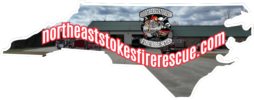






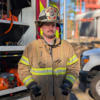
ALL CONTENT, INCLUDING ALL IMAGES AND PHOTOGRAPHY
EXCEPT AS SPECIFICALLY NOTED, IS PROPERTY OF
NORTHEAST STOKES VOLUNTEER FIRE & RESCUE.
CONTENT PROUDLY MAINTAINED BY A VOLUNTEER
Contact Information
To Contact Chief Clark, Click link below to Email. To contact ASST. Chief Webb, Click link below to Email. To Contact the Firehouse, Click link below to




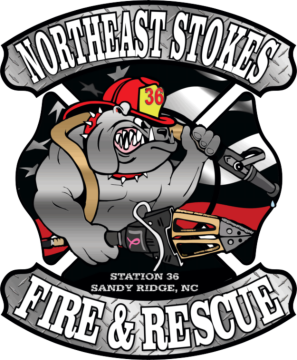


Have you been using your fireplace often? Do you notice that it isn’t working as well as it
used to? You may have some buildup of chimney creosote. Creosote is a black, tar-like
substance that forms inside your chimney when smoke doesn’t entirely escape.
As it builds up, creosote can cause chimney fires, which can then lead to house fires.
Luckily, a professional chimney sweep can help resolve the issue.
What Is Creosote?
Creosote is a type of soot that can form in your chimney as you use your wood burning fireplace.
The wood burns and creates smoke which can contain
creosote. If the smoke doesn’t rise fast enough, the creosote can accumulate in your chimney.
Creosote starts off somewhat easy to clean and remove. However, as it builds up, it develops into
a more tar-like substance. Consider the three stages of creosote.
Stage 1: First Degree Creosote
Stage 1 creosote is a thin layer of flakes. As you first use your fireplace or wood stoves, the smoke will
leave some creosote deposits. At this point, the issue isn’t urgent, but over time it can cause problems.
If you don’t take care of the creosote at this stage, it can develop into the second stage. While you can
get rid of stage 1 creosote with at-home products, stage 2 is a little harder.
Stage 2: Second Degree Creosote
In this stage, the creosote starts to look more like tar. It may still look like flakes, but you can’t remove it as
easily as before. You may be able to remove it yourself with some tools, but you should consider hiring a
chimney sweep to get rid of everything.
Your fireplace and chimney are still salvageable, but you should take immediate action. That way, the creosote
won’t progress to the third stage.
Stage 3: Third Degree Creosote
Third-degree creosote is thick and looks like tar. It is more concentrated, and this type of creosote is more
likely to cause chimney fires. The creosote restricts air movement within the chimney, and the thickness
means the chimney air column is smaller.
At this point, you need to contact a professional chimney sweep for help. They may be able to remove the
creosote, but that can damage your chimney liner. It’s usually better to replace your chimney liner.
What Causes Chimney Creosote?
A few things can cause chimney creosote, such as slow-burning wood. When your wood doesn’t burn fast
enough, the smoke and air take longer to escape the chimney. Your wood may burn slowly if the chimney
isn’t hot enough, so try to heat it to 250 degrees Fahrenheit or hotter.
Wet wood can also cause chimney creosote because it doesn’t heat up as much as dry wood. Unseasoned
wood typically has more moisture than seasoned wood, and that can keep the wood from getting as hot.
Another problem is incomplete combustion, which happens when there’s not enough oxygen.
The smoke won’t be able to rise, so it can provide the perfect environment for creosote.
Dangers of Creosote Buildup
As creosote builds up in your chimney, it can do a lot of damage. While the different stages pose unique
risks, any amount of creosote is problematic. When creosote accumulates on the side of your chimney,
it can keep smoke and air from getting out.
That allows toxic gases, like carbon monoxide, to build up. If you use your fireplace, you may put you and
your family at risk of inhaling toxins, but that’s not the only issue.
Chimney creosote can also lead to chimney fires. Creosote is very flammable, so if it catches on fire, it
can spread to your roof or into other parts of your house.
How Much Creosote Is Too Dangerous?
It doesn’t take much creosote to become dangerous. As soon as the creosote starts to build up, it can be an issue. However, stages 2 and 3 creosote are
worse than stage 1.
You can get rid of stage one creosote with a brush or a chimney cleaning log. But stages 2 and 3 are too thick or hard for you to remove yourself.
Stage 3 creosote is especially dangerous because it can severely restrict airflow out of your chimney. But even stage 2 creosote is an issue because it
can quickly turn into stage 3.
How Do You Get Rid of Creosote?
If you use your fireplace often, you should brush it or use a cleaning log each week. That way, you can get rid of stage 1 creosote before it progresses.
After using a cleaning log, be sure to sweep the bottom of your fireplace so that the loose creosote doesn’t catch fire.
However, you may not be able to get rid of it all. If any of the creosote reaches stage 2 or 3, you’ll need to hire a chimney sweep. The sweep can perform
an inspection to check the status of your chimney.
Then, they can determine the creosote stage, and they can take the right steps to get rid of it.
How Can You Minimize Creosote Buildup?
It canbe almost impossible to prevent creosote build yp, but you can minimize it. Use seasoned wood, which has less moisture than fresh wood. The drier
wood will burn more quickly, and the smoke will rise faster and easier.
You should also clean your chimney regularly to prevent buildup. Homeowners can hire a professional chimney sweep before using the fireplace each
year. That way, you can make sure everything is safe and ready to go.
However, you can use a brush or cleaning logs throughout the burning season to minimize buildup. If you use your fireplace often, you may want to hire
a chimney sweep after a few months.
How to Treat Creosote Buildup
If you can’t prevent or minimize chimney creosote buildup, you have a few treatment options. You can try at-home products to get rid of stage 1 creosote.
Logs and brushes let you get rid of some creosote quickly, but they aren’t the most effective options.
As creosote gets worse, you should contact a professional chimney sweep. That way, you can get an inspection and a professional cleaning. Treating
creosote yourself can be dangerous, but a chimney sweep can do the job.
Do you need someone to clean or inspect your chimney? Schedule an appointment with a chimney sweep today.










Family Safety Tips:




Effective Through Teamwork
5086 NC HWY 704 Sandy Ridge,NC.

Welcome to the Official Website for the
Northeast Stokes Fire & Rescue, Sandy Ridge, NC
The firefighters proudly serve the
citizens of the Northeast Stokes fire district

1 (336) 871-2334





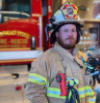

Contact Information
To Contact Chief Clark, Click link below to Email. To contact ASST. Chief Webb, Click link below to Email. To Contact the Firehouse, Click link below to Email.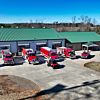
ALL CONTENT, INCLUDING ALL IMAGES AND PHOTOGRAPHY
EXCEPT AS SPECIFICALLY NOTED, IS PROPERTY OF
NORTHEAST STOKES VOLUNTEER FIRE & RESCUE.
CONTENT PROUDLY MAINTAINED BY A VOLUNTEER
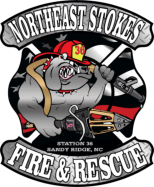






Have you been using your fireplace
often? Do you notice that it isn’t
working as well as it used to? You
may have some buildup of chimney
creosote. Creosote is a black, tar-like
substance that forms inside your
chimney when smoke doesn’t
entirely escape. As it builds up,
creosote can cause chimney fires,
which can then lead to house fires.
Luckily, a professional chimney
sweep can help resolve the issue.
What Is
Creosote?
Creosote is a type of soot that
can form in your chimney as
you use your wood burning
fireplace. The wood burns and
creates smoke which can contain
creosote. If the smoke doesn’t
rise fast enough, the creosote
can accumulate in your chimney.
Creosote starts off somewhat
easy to clean and remove.
However, as it builds up, it
develops into a more tar-like
substance. Consider the three
stages of creosote.
Stage 1: First
Degree Creosote
Stage 1 creosote is a thin layer
of flakes. As you first use your
fireplace or wood stoves, the
smoke will leave some creosote
deposits. At this point, the issue
isn’t urgent, but over time it can
cause problems.
If you don’t take care of the
creosote at this stage, it can
develop into the second stage.
While you can get rid of stage 1
creosote with at-home products,
stage 2 is a little harder.
Stage 2: Second
Degree Creosote
In this stage, the creosote starts
to look more like tar. It may still
look like flakes, but you can’t
remove it as easily as before.
You may be able to remove it
yourself with some tools, but
you should consider hiring a
chimney sweep to get rid of
everything.
Stage 3: Third Degree Creosote
Third-degree creosote is thick and looks like tar. It is
more concentrated, and this type of creosote is more
likely to cause chimney fires. The creosote restricts
air movement within the chimney, and the thickness
means the chimney air column is smaller.
At this point, you need to contact a professional
chimney sweep for help. They may be able to remove
the creosote, but that can damage your chimney liner.
It’s usually better to replace your chimney liner.
What Causes Chimney
Creosote?
A few things can cause chimney creosote, such as
slow-burning wood. When your wood doesn’t burn
fast enough, the smoke and air take longer to escape
the chimney. Your wood may burn slowly if the
chimney isn’t hot enough, so try to heat it to 250
degrees Fahrenheit or hotter.
Wet wood can also cause chimney creosote because it
doesn’t heat up as much as dry wood. Unseasoned
wood typically has more moisture than seasoned
wood, and that can keep the wood from getting as hot.
Another problem is incomplete combustion, which
happens when there’s not enough oxygen.
The smoke won’t be able to rise, so it can provide the
perfect environment for creosote.
Dangers of Creosote
Buildup
As creosote builds up in your chimney, it can do a lot
of damage. While the different stages pose unique
risks, any amount of creosote is problematic. When
creosote accumulates on the side of your chimney,
it can keep smoke and air from getting out.
That allows toxic gases, like carbon monoxide, to
build up. If you use your fireplace, you may put you
and your family at risk of inhaling toxins, but that’s
not the only issue.
Chimney creosote can also lead to chimney fires.
Creosote is very flammable, so if it catches on fire, it
can spread to your roof or into other parts
of your house.






Your fireplace and chimney are still salvageable, but you
should take immediate action. That way, the creosote
won’t progress to the third stage.
How Much Creosote Is Too
Dangerous?
It doesn’t take much creosote to become dangerous.
As soon as the creosote starts to build up, it can be an
issue. However, stages 2 and 3 creosote are
worse than stage 1.
You can get rid of stage one creosote with a brush or
a chimney cleaning log. But stages 2 and 3 are too
thick or hard for you to remove yourself.
Stage 3 creosote is especially dangerous because it
can severely restrict airflow out of your chimney. But
even stage 2 creosote is an issue because it can
quickly turn into stage 3.
How Do You Get Rid of
Creosote?
If you use your fireplace often, you should brush it or
use a cleaning log each week. That way, you can get
rid of stage 1 creosote before it progresses. After
using a cleaning log, be sure to sweep the bottom of
your fireplace so that the loose creosote doesn’t catch
fire.
However, you may not be able to get rid of it all. If
any of the creosote reaches stage 2 or 3, you’ll need
to hire a chimney sweep. The sweep can perform an
inspection to check the status of your chimney.
Then, they can determine the creosote stage, and they
can take the right steps to get rid of it.
How Can You Minimize
Creosote Buildup?
It canbe almost impossible to prevent creosote build
yp, but you can minimize it. Use seasoned wood,
which has less moisture than fresh wood. The drier
wood will burn more quickly, and the smoke will rise
faster and easier.
You should also clean your chimney regularly to
prevent buildup. Homeowners can hire a professional
chimney sweep before using the fireplace each year.
That way, you can make sure everything is safe and
ready to go.
However, you can use a brush or cleaning logs
throughout the burning season to minimize buildup. If
you use your fireplace often, you may want to hire a
chimney sweep after a few months.
How to Treat Creosote
Buildup
If you can’t prevent or minimize chimney creosote
buildup, you have a few treatment options. You can
try at-home products to get rid of stage 1 creosote.
Logs and brushes let you get rid of some creosote
quickly, but they aren’t the most effective options.
As creosote gets worse, you should contact a
professional chimney sweep. That way, you can get an
inspection and a professional cleaning. Treating
creosote yourself can be dangerous, but a chimney
sweep can do the job.
Do you need someone to clean or inspect your
chimney? Schedule an appointment with a chimney
sweep today.





Family
Safety Tips:






























































































